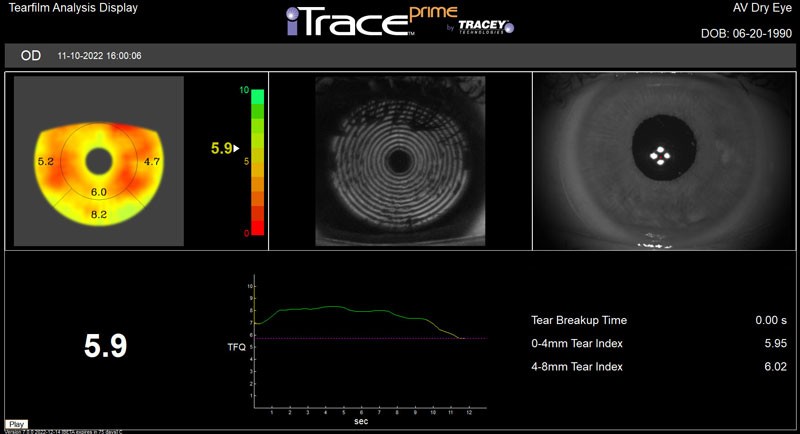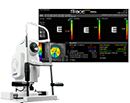The iTrace vs. The Pentacam® AXL Wave
However, the latest model, the Pentacam AXL Wave, is now being inexplicably compared to the iTrace in its stated clinical applications. Here’s a breakdown of where the two devices are vastly different, and how the AXL Wave cannot stand up to the iTrace, (just like the Nidek/Marco OPD Scan III fell short).
HOW WE COMPARE
RAY TRACING
VS
HARTMANN-SHACK
Using proprietary ocular Ray Tracing technology, the iTrace sends 256 consecutive beams of light into the eye, tracking where each beam lands on the retina. By measuring the pattern created by the collective points, the iTrace produces an exact simulation of how light enters and passes through the eye during the process of vision. As a result, only Ray Tracing provides the most objective and accurate refraction possible.
Hartmann-Shack aberrometry sends a single beam into the eye and measures the point spread as light bounces off the retina and exits the eye. This has been proven as a reliable aberrometry method for typical refractive patients, but when higher order aberrations (HOAs) are present — as is the case in many candidates for lens-based procedures — Hartmann-Shack data cannot be trusted to measure them. [1]
RAY TRACING
HARTMANN-SHACK
WHY IT MATTERS
Getting the most precise measurement possible of any eye is extremely important when planning a lens-based procedure like cataract surgery. The presence and effect of HOAs can impact a patient’s candidacy for certain lens implants. Consequently, the difference between Hartmann-Shack and Ray Tracing can be a patient who is satisfied with their vision after surgery and one who isn’t.
In the history of our industry, Hartmann-Shack aberrometry has rarely, if ever, been used to assess candidates for cataract surgery — there are better and more precise alternatives that leading physicians prefer.
In Practical Terms: The iTrace vs. The Pentacam AXL Wave
PRE-SURGERY
The iTrace is designed to be as useful as possible in a pre-operative setting, with functions aimed at assisting in patient education and providing an objective simulation of a patient’s real and potential vision, broken out into easy-to-understand component parts.

The iTrace Prime Dashboard
The Pentacam AXL Wave lacks an objective way to identify and track visual dysfunction. And, instead of the iTrace’s easy-to-interpret map, users have to rely on retro-illumination to subjectively assess opacities in the eye.
The Proprietary Tear Film Index
Users of the Pentacam AXL Wave cannot access this data using their device, making it more difficult to plan surgeries on patients with suspected or confirmed cases of dry eye.

POST-SURGERY

The iTrace Toric Check
The iTrace comes equipped with the Toric Check, a feature specifically designed for verifying the placement of a toric lens BEFORE any dilation. If the lens is inserted off axis, even by the slightest of margins, the Toric Check display will provide guidance on the exact correction needed — down to the degree — without wasting time on or causing discomfort with dilation. The Toric Check also tells you the cylinder correction you are getting from the lens you just implanted.
Ready to Learn More
About the iTrace Advantage?
When you purchase an iTrace, you’re getting more than just a tool — you’re also getting support from a team dedicated to your success. At Tracey Technologies, we’ll make sure that you have the resources you need to best serve your patients and grow your practice!
To learn more about using the iTrace in your practice, schedule a demo, call or email us today!

